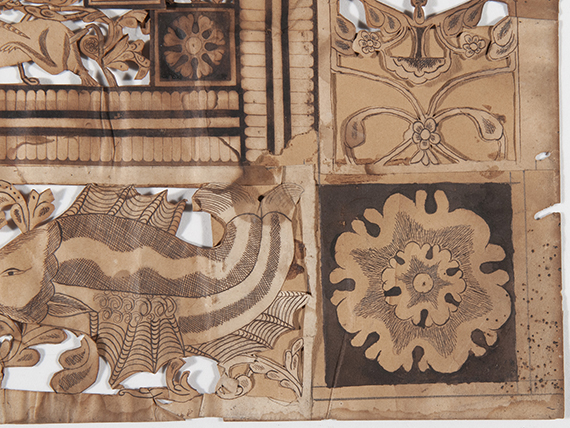The papercut arrived in the plastic enclosure pictured below. The paper is very brown, which serves as a warning that it may also be very weak and brittle. The brown color, a by-product of paper deterioration, is an indication that the paper likely suffered from long-term exposure to light, high humidity and temperature, as well as the effects of the aging iron gall ink. Brittle paper is particularly troubling in this case because the papercut has so many delicate and fragile elements.

During examination, low angled light, called raking light, is used to highlight texture and surface irregularities. Raking light, generated by light placed to the side of the object, reveals how crumpled and creased the papercut is.

Because the paper is brittle, the crumpling and folding has caused many of the more delicate pieces of the papercut to break. In the detail below, some areas where the paper has folded over on itself form a “z” shape (large red arrow) and result in breaks that do not align (small red arrow).

The papercut is composed of multiple sheets of paper. The center piece highlighted in pink below is one sheet.

The four margins highlighted in blue below are four separate pieces, adhered on top of the central piece.

The four corner pieces highlighted in yellow below are also four separate pieces, three adhered on top of the margins, and one adhered to the back.

The four corner pieces appear to have been attached after the rest of the papercut became crumpled and compressed. Although speculation, it is possible that the original corners were damaged, and the separate corner pieces were added to compensate for the loss of the original.

